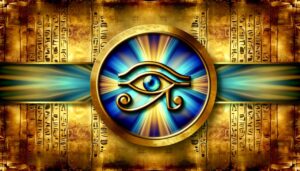Circle Arrow Symbol Meaning: What Is It?
The circle and arrow symbol, rooted in ancient civilizations like Mesopotamia and Egypt, represents a blend of unity, direction, and progress. Historically, the circle conveyed celestial or eternal cycles, while the arrow indicated movement and intent.
Today, it symbolizes continuous improvement and dynamic momentum in various contexts, from art to branding and tattoos. Its use encapsulates the harmonious balance between constancy and change, resonating as a poignant reminder of life's cycles and purpose.
Understanding its evolution reveals deeper insights into its enduring relevance and universal appeal.
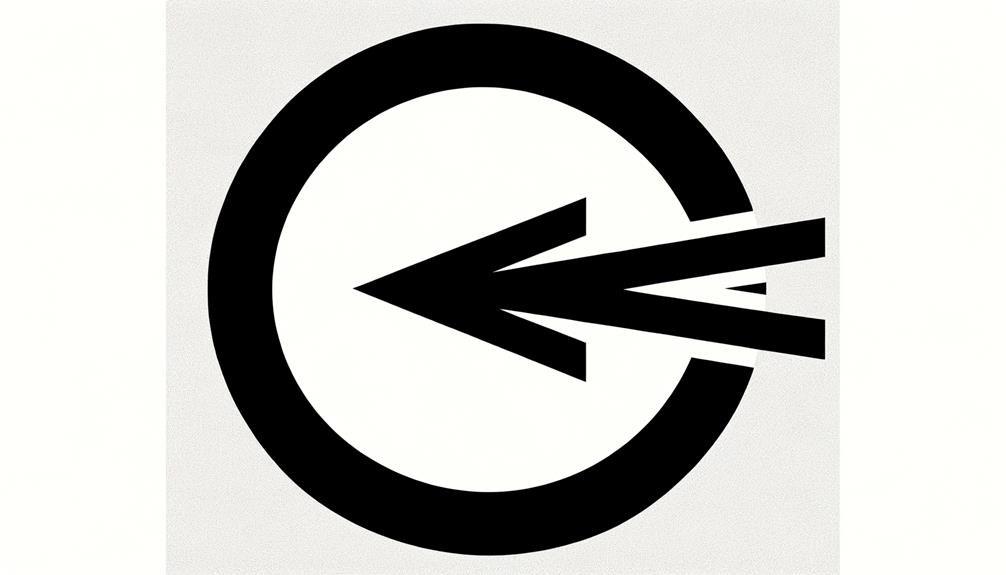
Key Takeaways
- The circle and arrow symbol represents unity, direction, and progress across various cultures and contexts.
- In ancient civilizations, the circle symbolized eternity and the arrow indicated movement and guidance.
- Modern interpretations see the symbol as embodying a continuous journey of self-improvement and purpose.
- The combination of circle and arrow in logos suggests dynamic movement and completeness for brands.
- Tattoos featuring this symbol often reflect personal narratives of direction, growth, and life's cyclical nature.
Historical Origins
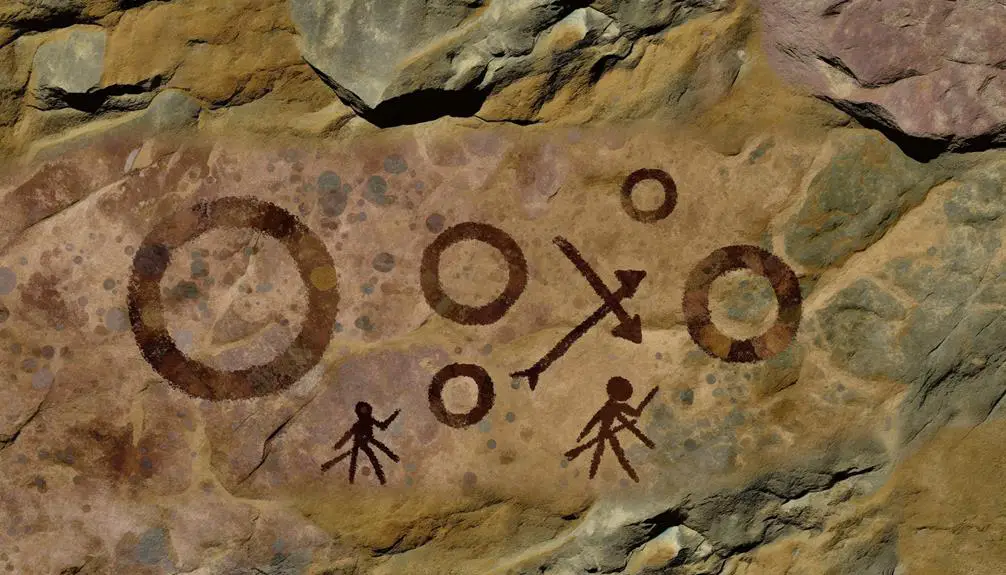
The historical origins of the circle and arrow symbol can be traced back to ancient civilizations, where it often represented celestial bodies and directional forces. In Mesopotamian culture, the circle frequently symbolized the sun or moon, embodying constancy and cyclic nature. Meanwhile, the arrow indicated movement or shift, guiding travelers and marking boundaries.
Similarly, in ancient Egyptian iconography, the circle depicted the eternal cycle of life and death, while the arrow's linear form suggested directionality and intent. This duality of meanings—cyclic permanence and dynamic flow—demonstrates the symbol's complexity and its capacity to convey abstract concepts.
Understanding these ancient roots provides a foundational insight into how such symbols have evolved over millennia, retaining their powerful visual and conceptual significance.
Cultural Significance
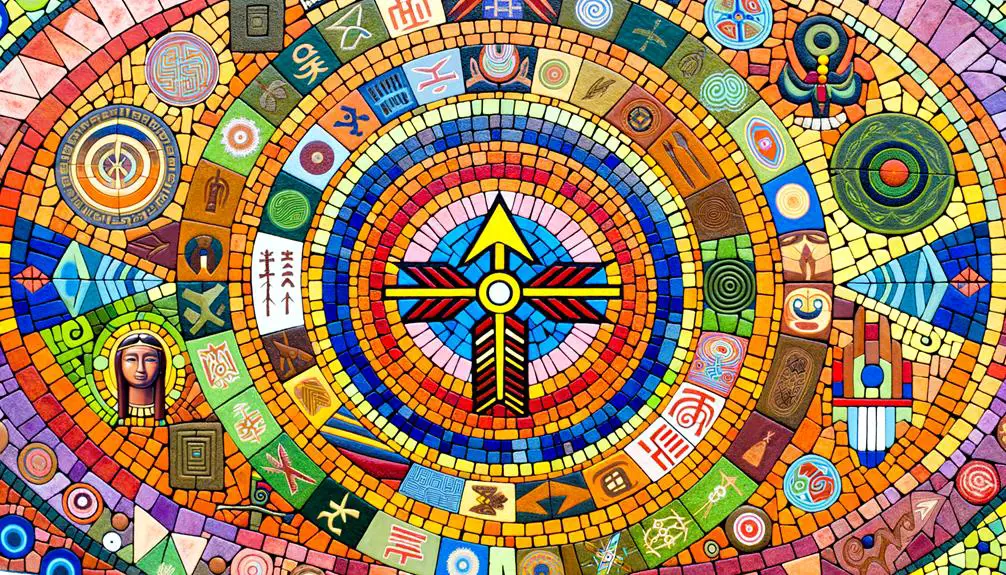
In contemporary cultures, the circle and arrow symbol continues to embody multifaceted meanings, often representing concepts such as unity, direction, and progress.
This emblem is pervasive across various sectors, from corporate logos to social movements, underscoring its versatility.
In business contexts, it can signify a company's forward-thinking ethos and continuous improvement. Socially, it may denote inclusivity and collective movement towards shared goals.
The arrow, penetrating the circle, connotes dynamic momentum, suggesting a break from stasis towards innovation.
Additionally, the symbol's geometric simplicity facilitates universal comprehension, transcending linguistic barriers.
Ultimately, the circle and arrow symbol encapsulates the essence of modernity, where interconnectedness and advancement are paramount, making it a powerful visual shorthand in our interconnected global landscape.
Symbolism in Art
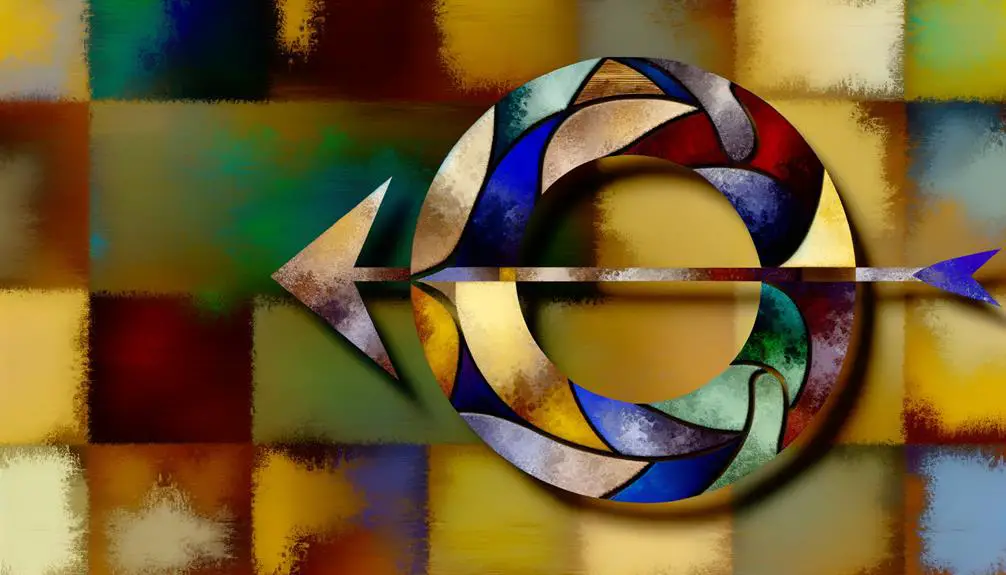
Extending beyond its contemporary implications, the circle and arrow symbol has also been a profound subject of exploration and interpretation in the domain of art, where its geometric precision and inherent duality offer a rich tapestry of meanings for artists and audiences alike.
In visual art, the circle often symbolizes unity, infinity, and the cyclical nature of life, while the arrow signifies direction, progress, and dynamic movement. The juxtaposition of these elements can illustrate themes of tension between constancy and change, harmony and disruption.
Artists such as Wassily Kandinsky and Piet Mondrian have utilized these forms to convey complex philosophical concepts, inviting viewers to engage deeply with the interplay of form, space, and meaning. This duality underscores the enduring relevance of these symbols in artistic expression.
Modern Interpretations
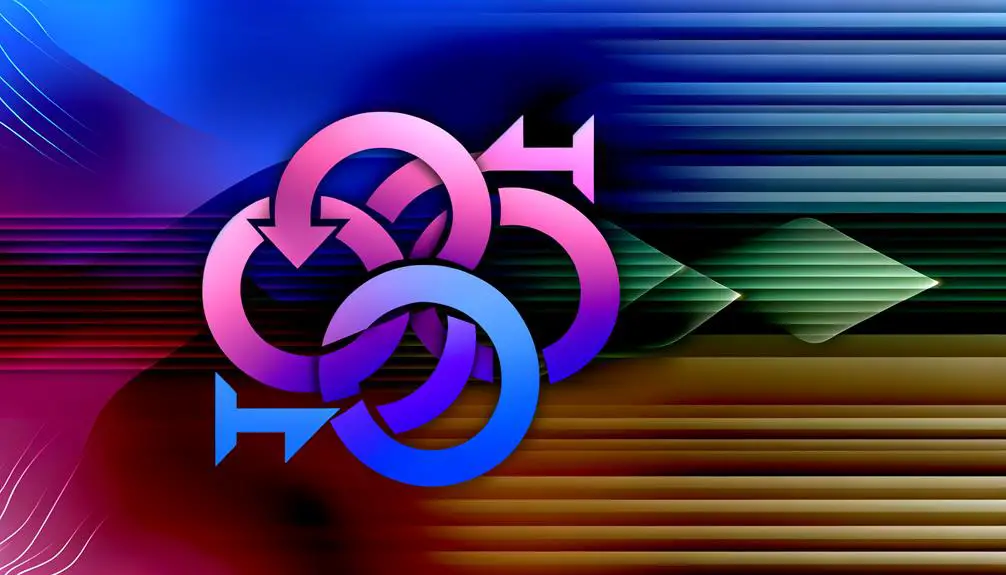
In contemporary contexts, the circle and arrow symbol has gained significant traction across various domains such as digital communication, branding, and social media. Its ubiquitous presence in user interface elements and app icons underscores its functional utility in guiding user interactions.
Additionally, the symbol's integration into modern logos and trending social media graphics reflects its enduring appeal and versatility in conveying dynamic movement and innovative direction.
Digital Communication Use
The circle and arrow symbol has evolved in digital communication to represent a wide range of concepts, from user navigation cues to data processing indicators, reflecting its versatility and growing significance in modern interfaces.
In user interfaces, the symbol frequently guides users to proceed or return to a previous state, enhancing navigational clarity. Additionally, it often signifies ongoing processes, such as loading or updating data, thereby informing users of system activity. This dual functionality underscores its role in improving user experience by combining intuitive design with informative feedback.
As digital environments become increasingly complex, the circle and arrow symbol's simplicity and adaptability make certain it remains a critical tool for effective communication and user interaction design.
Branding and Logos
Modern branding strategies often leverage the circle and arrow symbol to convey notions of dynamism, progress, and interconnectedness, thereby enhancing brand identity and resonance with contemporary audiences. This symbol is particularly effective in encapsulating complex brand messages succinctly. Its use in logos can be seen in various industries, providing a versatile and universally understood iconography.
Key reasons for its widespread adoption include:
- Versatility: Adaptable to multiple design contexts and scales.
- Simplicity: Easily recognizable and memorable for consumers.
- Symbolism: Rich in meaning, representing growth, movement, and connectivity.
- Aesthetic appeal: Clean lines and balanced forms contribute to a modern and professional look.
These attributes make the circle and arrow symbol a potent tool in contemporary branding.
Social Media Trends
As branding strategies evolve, the circle and arrow symbol also finds substantial relevance in social media trends, where it is frequently reinterpreted to align with the rapid pace of digital communication and user interaction. Platforms like Instagram, Twitter, and TikTok have adopted this symbol to convey concepts such as movement, direction, and connection. The table below illustrates the modern interpretations of the circle and arrow symbol on various social media platforms.
| Platform | Interpretation |
|---|---|
| Highlighting Stories and Media Flow | |
| Retweeting and Sharing Content | |
| TikTok | Video Loops and User Engagement |
| Professional Connections | |
| Snapchat | Snap Map and Location Sharing |
These interpretations demonstrate the symbol's adaptability in enhancing user experiences and facilitating engagement.
Use in Logos

Incorporating the circle and arrow symbol into logos often conveys a sense of motion, direction, and continuity, making it a popular choice for brands aiming to communicate progress and innovation. This symbol can enhance a brand's visual identity by leveraging its inherent meanings.
Here are four ways it benefits logos:
- Dynamic Movement: The arrow suggests forward movement, symbolizing growth and future-orientation.
- Completeness: The circle represents unity and wholeness, ideal for brands emphasizing inclusive solutions.
- Guidance and Direction: Arrows provide a sense of navigation, perfect for guiding principles or directional services.
- Modernity: The clean, geometric lines of circles and arrows align well with contemporary design aesthetics, projecting a modern brand image.
These elements collectively enhance the logo's ability to communicate key brand values effectively.
Tattoo Meanings
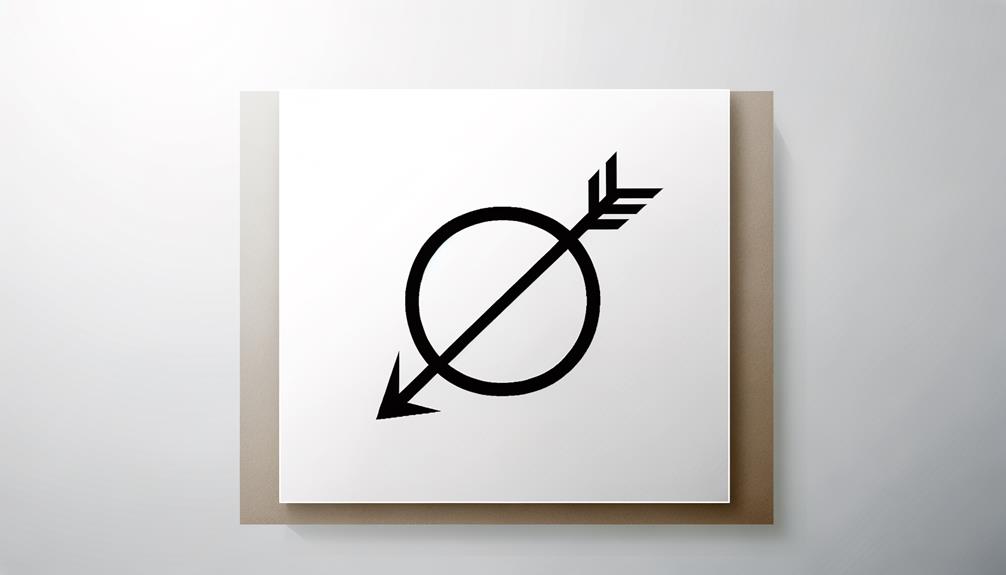
In the world of tattoos, the circle and arrow symbol often carries deep personal significance, reflecting themes of direction, purpose, and life's cyclical nature.
Popular designs frequently incorporate minimalist aesthetics or blend with other elements like compasses and mandalas, enhancing their visual and symbolic resonance.
This section will explore how individuals imbue these symbols with unique meanings and why they resonate so profoundly in tattoo artistry.
Personal Significance
The circle and arrow symbol, when chosen as a tattoo, often carries deeply personal significance, representing themes of direction, life cycles, and personal growth. This powerful emblem can encapsulate an individual's journey and aspirations, serving as a constant reminder of their purpose and experiences.
The following are common interpretations:
- Direction: The arrow signifies movement and purpose, guiding the wearer towards their goals.
- Life Cycles: The circle represents the cyclical nature of life, encompassing beginnings and endings.
- Personal Growth: Together, they symbolize the continuous journey of self-improvement and learning.
- Balance: The combination can reflect a harmonious balance between progress (arrow) and continuity (circle).
These nuanced meanings offer a profound connection to the wearer's personal narrative.
Popular Designs
Exploring popular designs of circle and arrow tattoos reveals a rich tapestry of symbolic interpretations and artistic expressions that resonate deeply with individuals across various cultures. These tattoos often combine visual simplicity with profound meaning, encapsulating themes like direction, eternity, and unity. The interplay of circles and arrows can signify a journey, both physical and spiritual, embodying purpose and infinite cycles.
| Design Element | Symbolism | Cultural Relevance |
|---|---|---|
| Single Arrow | Direction, focus | Native American, Celtic |
| Circle | Eternity, unity | Global, universal |
| Broken Circle | Imperfection | Japanese (Wabi-Sabi) |
| Target Symbol | Goals, ambition | Modern, Western |
| Arrows in Circle | Protection, cycle | Ancient Greek, Nordic |
Each design variation provides a unique lens through which wearers can express personal narratives and aspirations.
Conclusion
To sum up, the circle and arrow symbol embodies a rich tapestry of meanings, seamlessly interwoven throughout history, culture, art, and modern iconography.
Much like a chameleon adapting to its surroundings, this symbol's versatility allows it to convey diverse messages, from unity and direction to transformation and purpose.
Its applications in logos and tattoos further underscore its enduring appeal and profound significance.
Consequently, the circle and arrow continue to resonate deeply across various contexts, both ancient and contemporary.




